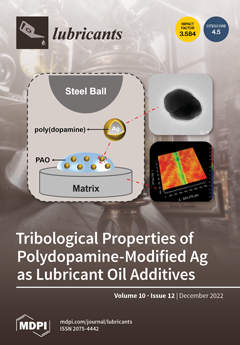Bronze metal matrix composites (MMCs) are futuristic materials that may find applications in automobile, aviation, and marine industries, specifically for propellers in submarines, bearings, and bushings for defence purposes. The present investigation studied the effect of Si
3N
4 (5, 10, 15
[...] Read more.
Bronze metal matrix composites (MMCs) are futuristic materials that may find applications in automobile, aviation, and marine industries, specifically for propellers in submarines, bearings, and bushings for defence purposes. The present investigation studied the effect of Si
3N
4 (5, 10, 15 wt%) ceramic particles on the physical, metallurgical, and tribological behaviour of Cu-10Sn/Si
3N
4 MMCs. Cast rods of three composites and a base alloy were fabricated using the liquid metallurgy route. The microstructural characterisation for the cast samples was conducted using FESEM (Field Emission Scanning Electron Microscope), EDS (Energy Dispersive Spectroscopy), XRD (X-ray diffraction), and TEM (Transmission Electron Microscope), which revealed that the Cu-10Sn alloy reinforced with 5 wt% of Si
3N
4 had homogeneous distribution and perfect bonding of the Si
3N
4 with the bronze MMC. The dry sliding wear test was performed by varying parameters such as the applied load (10, 20, 30 N) and sliding velocity (1, 2, 3 m/s). The specific wear rate (SWR) increased against an increased load. However, the SWR and coefficient of friction decreased and then increased against an increasing sliding velocity due to tribolayer formation. The primary wear mechanism observed at low and high loads was severe delamination. In contrast, the wear mechanism was adhesion wear at high and low velocities. Amongst the researched samples, Cu-10Sn/5 wt% Si
3N
4 composites revealed the least SWR at a load of 10 N and sliding velocity of 2 m/s and hence can be recommended for manufacturing bearings and bushings in the automobile and defence industry.
Full article





